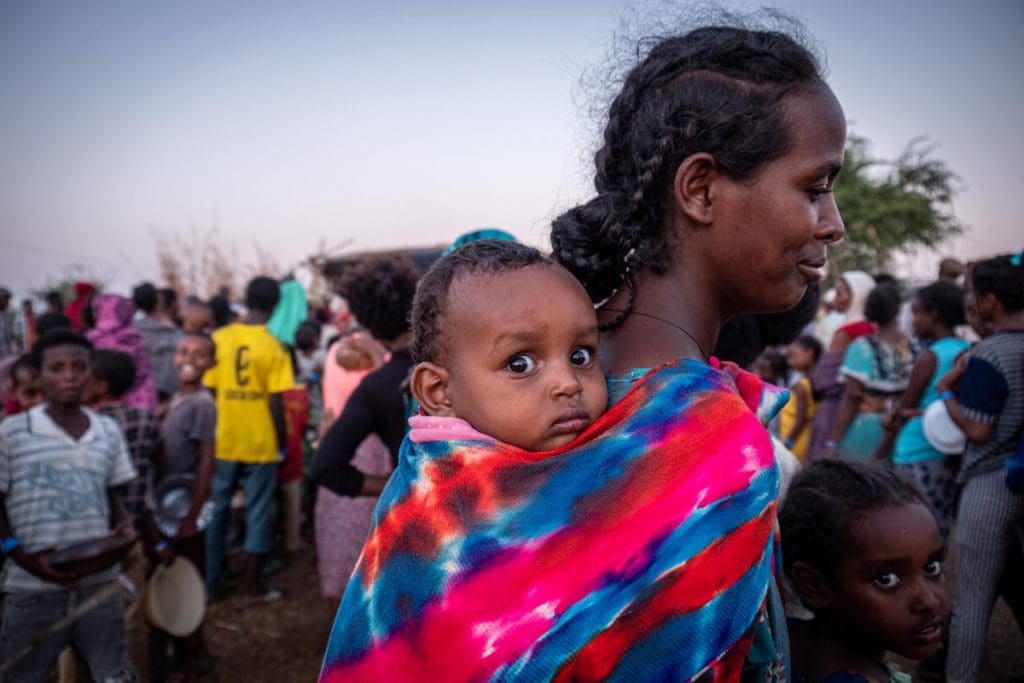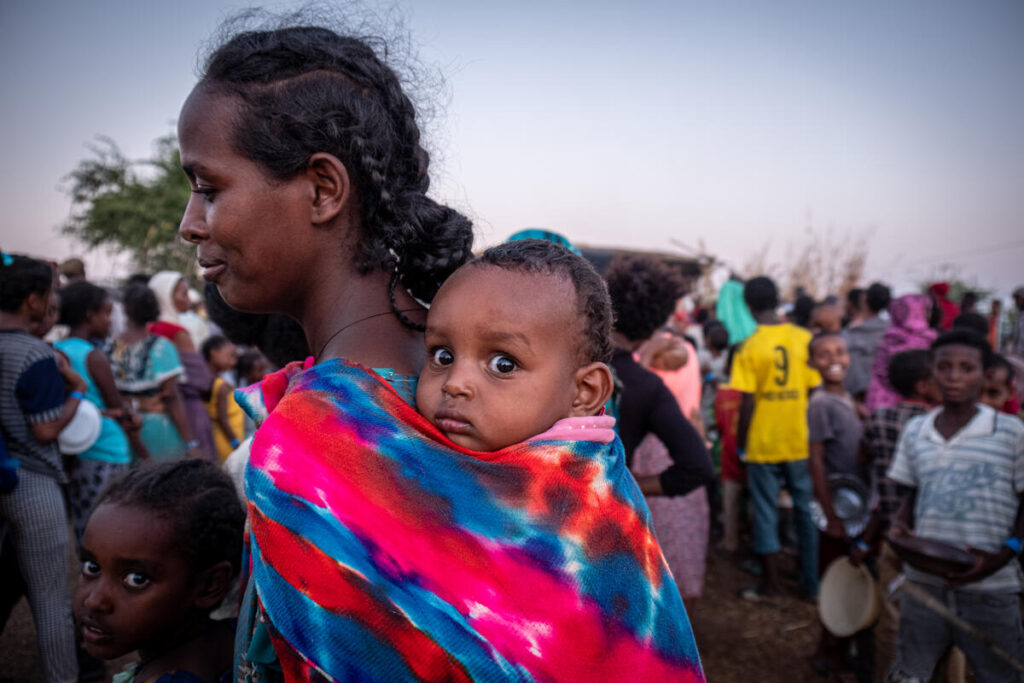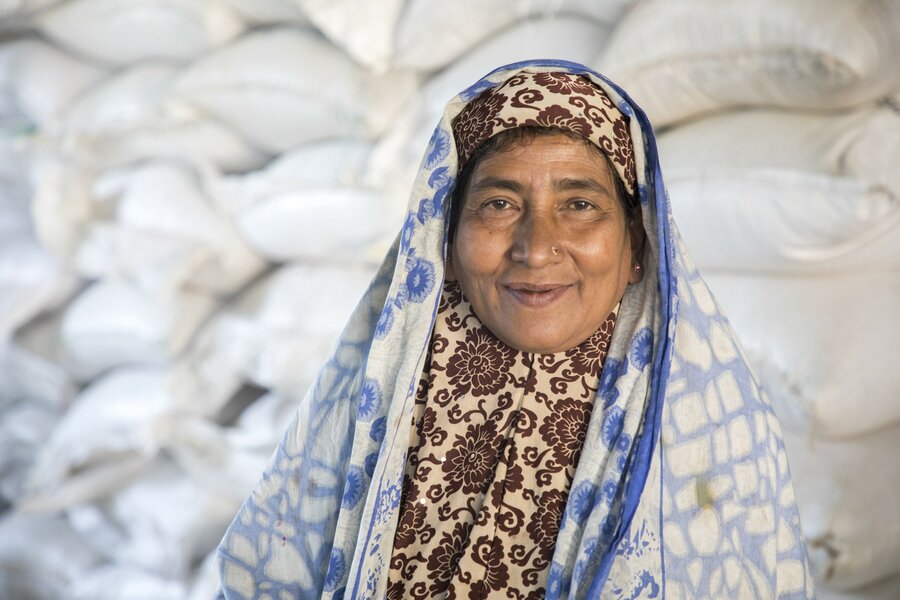Women Are the Victims of – and Part of the Solution to – Hunger

One of the bitter realities of the United Nations World Food Programme’s work is that women and girls are more likely than men and boys to suffer from hunger, while also being the ones responsible for raising and procuring food for their families. So everywhere we work, closing the hunger gender gap is one of our biggest priorities.
In fact, every February and March, we highlight not just how hunger stalks women disproportionately but also how support for the U.N. World Food Programme helps address that stubborn challenge.
More than half of the people we serve each year – about 54 million – are women and girls. To keep them from the precipice of hunger, we train female farmers so they can feed themselves and their families and take advantage of their local markets. If they had equal resources, female farmers could feed up to 150 million people.

A mother waits in line with her baby to receive food in Um Rakuba refugee settlement, Sudan. The United Nations refugee agency says about 43,000 people have fled Ethiopia’s embattled Tigray region into neighboring Sudan.
Our work also helps keep girls in school where they can eat meals, receive food to take home to their families and get the education they need to enjoy lifelong self-sufficiency and economic stability. And we deliver to more than 17 million infants, pregnant women and new moms essential nutrition from pregnancy to a child’s second birthday, a most critical period in every person’s physical development.
Empowering women has a direct impact on their ability to eat and to feed their families. Take Cox’s Bazar, Bangladesh, the resettlement site of more than 750,000 Rohingya driven from their homes in 2017, where the U.N. World Food Programme provides refugees – especially women – e-cards to purchase food. As one Rohingya woman there, Amina, told the U.N. World Food Programme, the e-card allowed her to make her own food choices and provide her family with the nourishment they need to thrive.

Amina in one of WFP’s food distribution centers.
“This is truly beneficial for us,” Amina said. “We can find most of the items here, and we can secure our food supply in peace and eat in peace. We don’t need to hustle in a queue to collect food items. We can now collect food with dignity. Now people know me as a cardholder. I also know people working for WFP, and they treat me with respect and care, and I really like it.”
Too many women like Amina, who are caught in the maelstrom of conflict and painful displacement from their homes, go hungry in part because they lose the communities and critical support systems that provide them not just with normalcy, but also life-saving food. And in conflict and non-conflict settings alike, women in lower-income countries are most often the ones to hold back when food is scarce so that men and children can eat.
There is much to do to extinguish the long-burning hunger gender gap. And there is much the U.N. World Food Programme already does to put out that fire.
To explore this issue and these solutions in more depth, please join me and a distinguished panel on March 5, 2021 at noon ET for our US Against Hunger No Woman Left Behind: The Future of Gender Inequity and Hunger online event. Register here.




